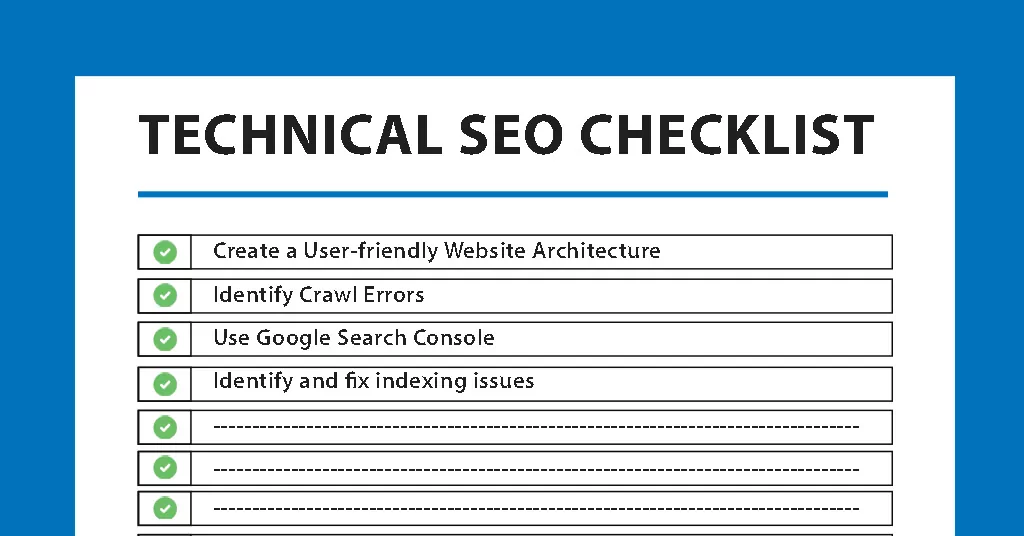E-commerce Accessibility: Achieving the Right ADA Compliance
Table of contents

E-commerce Accessibility is a critical issue for businesses hoping to stay compliant with the Americans with Disabilities Act (ADA). This blog post will provide insights on how to ensure your online store is accessible to all users, including those with disabilities. It will discuss the importance of accessibility, the legal implications of ADA compliance, and the steps you can take to make your store accessible. Ultimately, this blog post aims to help businesses understand the importance of e-commerce accessibility and take the necessary steps to make their websites accessible to everyone.
Introduction
In today’s digital age, e-commerce has become an integral part of our lives. With the convenience of online shopping, it has become a go-to option for many people. However, not everyone has the same level of accessibility to these online platforms, especially those with disabilities. As per Web Design Company Jacksonville, ensuring that everyone has equal access to online shopping, is crucial to achieving the right ADA compliance. This means making sure that your website is designed and developed in a way that accommodates people with disabilities. It’s not only a legal requirement but also a moral obligation to make sure that everyone can enjoy the benefits of e-commerce. By making your website ADA-compliant, you not only cater to a larger audience but also enhance the user experience for everyone. In this blog, we’ll explore the different ways you can achieve ADA compliance and make your e-commerce platform accessible to all. So, let’s get started and make e-commerce accessible for everyone!
What is E-commerce
E-commerce refers to the buying and selling of goods and services online. With the rise of technology, e-commerce has become an increasingly popular way for businesses to reach customers and increase sales. However, it’s important to ensure that e-commerce websites are accessible to all individuals, including those with disabilities. Achieving the right ADA compliance is crucial in this regard. The Americans with Disabilities Act (ADA) requires that businesses make their websites accessible to individuals with disabilities, including those who are deaf or blind. This means that e-commerce websites must be designed in a way that allows individuals with disabilities to navigate and use them easily. By achieving the right ADA compliance, businesses can not only avoid legal issues but also ensure that they are providing equal access to all customers. E-commerce accessibility is not only a legal obligation but also a moral responsibility. Businesses should strive to create an inclusive environment that caters to all customers, regardless of their abilities.
What is ADA Compliance

As an e-commerce business owner, it’s crucial to understand what ADA compliance means and how it affects your website. ADA compliance refers to the Americans with Disabilities Act, a law that requires businesses to make their services and facilities accessible to people with disabilities. In the context of e-commerce, this means ensuring that your website is accessible to people with visual, auditory, and motor impairments says Web Design Jacksonville. Achieving ADA compliance involves making changes to your website’s design, functionality, and content to ensure that everyone can use it regardless of their abilities. Not only is it the right thing to do, but it’s also a legal requirement that can result in costly lawsuits if ignored. By achieving ADA compliance, you’ll not only make your website accessible to more people but also improve your brand’s reputation and increase customer loyalty. So, take the necessary steps to ensure that your e-commerce website is ADA-compliant and accessible to everyone.
Introduction to E-commerce Accessibility
In today’s digital age, e-commerce has become a crucial part of businesses worldwide. However, with the rise of online shopping, it is essential to ensure that e-commerce websites are accessible to everyone, including people with disabilities. This is where e-commerce accessibility comes in. E-commerce accessibility refers to designing and developing websites that are accessible to people with disabilities, ensuring that they can navigate and interact with the site with ease. Achieving the right ADA compliance is crucial to ensure that e-commerce websites are accessible to everyone, regardless of their abilities. By making e-commerce websites accessible, businesses can increase their customer base and improve customer satisfaction. Not only is it the right thing to do, but it is also a legal requirement under the Americans with Disabilities Act (ADA). Therefore, it is crucial to prioritize e-commerce accessibility to ensure that everyone has equal access to online shopping experiences.
Benefits of Accessibility for E-commerce Sites
Ensuring accessibility for e-commerce sites is not only a legal requirement but also a smart business move. By making your website accessible to all users, you open up your business to a wider audience, including those with disabilities. This can lead to increased sales and customer loyalty. Additionally, accessible websites are easier to navigate, which can improve the overall user experience and reduce bounce rates. Providing accessibility features such as alt tags, captions, and audio descriptions can also improve your website’s search engine optimization (SEO), making it easier for potential customers to find your site says Jacksonville SEO company. Furthermore, by prioritizing accessibility, you demonstrate your commitment to inclusivity and social responsibility, which can enhance your brand reputation and attract customers who value these values. In short, investing in accessibility for your e-commerce site is not only the right thing to do, but it can also benefit your business in numerous ways.
Understanding ADA Compliance and its Requirements
As an e-commerce business owner, it is essential to understand ADA compliance and its requirements to ensure that your website is accessible to everyone, including people with disabilities. The Americans with Disabilities Act (ADA) was enacted in 1990 to prohibit discrimination against individuals with disabilities in all areas of public life, including employment, transportation, and access to goods and services. In 2010, the Department of Justice (DOJ) issued regulations that extended the ADA’s requirements to websites. To achieve the right ADA compliance, your website must be designed and coded in a way that accommodates assistive technologies, such as screen readers, and provides alternative text for images and videos. Additionally, your website must be navigable using only a keyboard, and all content must be easily understandable and accessible to users with disabilities. Failure to comply with ADA regulations can result in legal action, fines, and damage to your reputation. By making your E-commerce Website ADA-compliant, you not only ensure that your business is accessible to everyone but also demonstrate your commitment to inclusion and diversity.
How to achieve ADA compliance in e-commerce

Achieving ADA compliance in e-commerce is crucial for businesses to ensure that all customers, including those with disabilities, have equal access to their online platforms. To achieve ADA compliance, businesses must ensure that their websites and mobile apps are accessible to individuals with disabilities, including those who are visually impaired, hearing impaired, or have physical disabilities. This can be achieved by implementing features such as alt text for images, closed captioning for videos, and keyboard navigation for those who cannot use a mouse. According to Web Design Jacksonville FL, businesses must ensure that their website is compatible with assistive technologies such as screen readers and braille displays. It is also important to regularly test the website for accessibility and make necessary improvements. By achieving ADA compliance in e-commerce, businesses not only meet legal requirements but also create a more inclusive and welcoming environment for all customers.
Challenges of Meeting ADA Compliance on E-commerce Sites
Ensuring ADA compliance on e-commerce sites can be a challenging task. One of the biggest challenges is making sure that all website content is accessible to individuals with disabilities. This includes providing alternative text for images, captions for videos, and ensuring that all website functionality can be accessed through a keyboard. Another challenge is making sure that the website is compatible with assistive technologies such as screen readers and voice recognition software. This requires careful consideration of website design and development, as well as ongoing testing and maintenance. Additionally, e-commerce sites must ensure that their checkout process is accessible to individuals with disabilities, including those who are blind or visually impaired. This includes providing clear and concise instructions, accessible forms, and alternative payment options. Despite the challenges, achieving ADA compliance on e-commerce sites is essential for ensuring equal access to goods and services for all individuals, regardless of their disabilities. By taking the necessary steps to achieve ADA compliance, e-commerce sites can create a more inclusive and accessible online shopping experience for everyone.
Steps to Achieving ADA Compliance on Your E-commerce Site
As an e-commerce business owner, it is crucial to ensure that your website is accessible to everyone, including people with disabilities. Achieving ADA compliance on your e-commerce site may seem like a daunting task, but it is necessary to provide equal access to all customers.
Achieving ADA compliance on your e-commerce site can seem like a daunting task. However, with the right steps, you can ensure that your website is accessible to everyone, regardless of their ability. Here are some tips on how to make sure your e-commerce store is ADA-compliant:
- Perform an audit of the website and its content. This includes running an accessibility scanner to ensure that images, links, and other elements are labeled properly and are easy to recognize by users with disabilities. Additionally, check for any coding errors that could prevent users from accessing the content or functionality of your site.
- Ensure your e-commerce platform is ADA-compliant. Many popular CMS platforms such as WordPress have plugins available that make it easier for web developers to create sites that are accessible to those with disabilities. Make sure to research the accessibility features of your chosen platform before purchasing a plugin or theme.
- Incorporate accessibility tools into your website design. These tools can help make it easier for people with disabilities to navigate and interact with your site by providing assistive technologies such as voice recognition software, screen readers, and more.
- Test the accessibility of your website regularly. Testing should be done both manually and automatically in order to make sure all aspects of the site are compliant with ADA standards.
By taking these steps, you’ll be well on your way toward achieving ADA compliance on your e-commerce site! With the right measures in place, you can ensure that everyone has access to the products and services you offer – regardless of their ability level or disability status!
Don’t wait until it’s too late, take the necessary steps to achieve ADA compliance on your e-commerce site today.
Tips for Improving Accessibility on Your E-commerce Site
Ensuring that your e-commerce site is accessible to all individuals, regardless of their abilities, is not only the right thing to do but also a legal requirement. To achieve the right ADA compliance, there are a few tips you can follow to improve accessibility on your e-commerce site. First, ensure that your website is keyboard-friendly, allowing users to navigate through the site using only the keyboard. Second, use clear and concise language, avoiding complex jargon and technical terms that may be difficult for some users to understand. Third, provide alternative text for all images, allowing users who use screen readers to understand the content of the image. Fourth, ensure that your website is compatible with assistive technologies such as screen readers and magnifiers. Finally, test your website’s accessibility regularly, using tools such as WAVE or AChecker to identify any accessibility issues that need to be addressed. By following these tips, you can improve the accessibility of your e-commerce site and ensure that all users can access your content and products.
Conclusion
In conclusion, achieving the right ADA compliance for e-commerce accessibility is not only a legal requirement but also a moral obligation. It is important to ensure that all individuals, regardless of their abilities, can access and use your e-commerce platform without any barriers. By implementing accessibility features, you not only increase your customer base but also improve the overall user experience for all users. It is crucial to regularly review and update your website to ensure that it remains compliant with the latest accessibility guidelines. By doing so, you not only avoid potential legal issues but also demonstrate your commitment to inclusivity and accessibility. Remember, accessibility is not a one-time fix, but an ongoing process that requires continuous effort and improvement. Let’s work together to make the digital world a more accessible and inclusive place for everyone.







